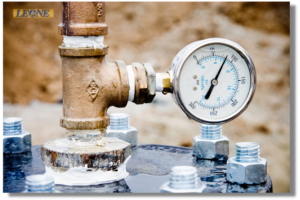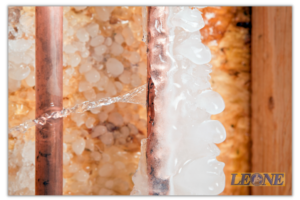
One of the problems that you may encounter during the winter season is frozen water pipes. If the weather is cold, freezing water expands which adds pressure to the plumbing pipes. This unyielding pressure may cause the pipes to crack, eventually leaking the water inside your home. Learning how to unfreeze frozen pipes safely and efficiently can save you from trouble and untimely repairs due to water damage.
Preventing Your Pipes From Freezing
Before discussing how to unfreeze frozen pipes, we should also remember that prevention is still the best remedy. Before the winter season comes, make sure that you take the following initiatives to protect your pipes from getting frozen.
Insulate the pipes.
You can insulate the pipes with pipe wrap or pipe insulation. The wrap comes in rolls and can be spun around the pipe. Pipe insulation is a foam tube that can be put around pipes. Pipe insulation comes in different lengths and snaps over the pipe. Another product available is electric heat tape. Heat tape is a plug-in wire system that can be run along copper pipes to keep it from freezing. This can be added under pipe insulation and will only turn on when the temperature reaches a certain point.
Adjust the thermostat accordingly.
Always maintain your thermostat set at the same temperature from morning to evening. This can also reduce the tension in the furnace during extreme cold weather. If you plan to leave the house for a few days, you can lower your home’s thermostat but don’t set it below 59 Degrees Fahrenheit.
Allow a faucet to drip overnight or when you are away.
Allowing water to run a small but steady drip can prevent ice from forming inside those pipes when temperatures are freezing. Ice cannot form when water is moving.
Open cabinet doors.
If your kitchen and bathroom pipes are near the exterior walls, we recommend that you leave the cabinet doors open. This will allow warm air to circulate and may help prevent burst pipes.
Seal cold air leaks.
Cold air can enter your home through holes where electrical wiring, pipes, duct work, or dryer vents are installed. Seal those gaps and locate other areas where cold air can enter.
How To Unfreeze Frozen Pipes?
Despite the effort of protecting your pipes from getting frozen, it is still possible that you will end up with frozen pipes. So how can you unfreeze frozen pipes safely and efficiently? Here are some of the tips we can share.
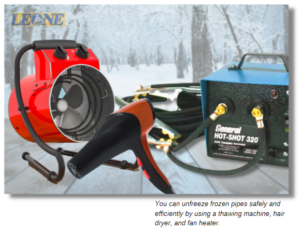
Get a thawing machine.
If you live in places that often get freezing temperatures, it is a wise decision to invest in getting a
thawing machine. This machine can help to get water flowing and reduce the risk of having pipes burst.
Use a hair dryer as a source of heat.
If you use a hair dryer to thaw a frozen pipe, do this with caution. This procedure works best on metal pipes. If your pipes are plastic, be careful since hair dryers can melt plastic pipes. PVC pipes can be damaged at temperatures as low as 140 °F (60 °C). Do not use other appliances stronger than a hair dryer.
Blow a fan heater into outdoor vents.
Blowing warm air into an external vent can quickly thaw any pipes that are nearby. Pipes often run alongside ductwork, so enforcing warm air into the ducts is a good idea.
When To Ask For Help From A Plumber?
Learning how to unfreeze frozen pipes during winter seasons can help you save time and money from untimely repairs. But expect the unexpected! If all efforts are in vain despite all the know-how to unfreeze frozen pipes, then it’s time for a professional plumber to handle the issue. Sometimes, it is easy to thaw frozen pipes by yourself. But if things are getting out of hand, it is better to contact
Rochester New York’s best plumbers!
Contact us anytime and we are here to take care of your frozen pipes concern.
 One of the problems that you may encounter during the winter season is frozen water pipes. If the weather is cold, freezing water expands which adds pressure to the plumbing pipes. This unyielding pressure may cause the pipes to crack, eventually leaking the water inside your home. Learning how to unfreeze frozen pipes safely and efficiently can save you from trouble and untimely repairs due to water damage.
One of the problems that you may encounter during the winter season is frozen water pipes. If the weather is cold, freezing water expands which adds pressure to the plumbing pipes. This unyielding pressure may cause the pipes to crack, eventually leaking the water inside your home. Learning how to unfreeze frozen pipes safely and efficiently can save you from trouble and untimely repairs due to water damage.

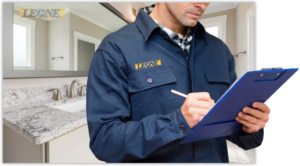 Maintaining a home is important for the safety and comfort of your family. As a good maintenance practice, it is a good idea to have your home inspected once in a while to avoid any plumbing issues. It is also recommended for older homes which are vulnerable to deterioration. However, maintaining a home can be challenging, especially in those hard-to-reach and concealed areas such as your plumbing system. In this blog, we will get to know more about plumbing inspection and what it entails.
Maintaining a home is important for the safety and comfort of your family. As a good maintenance practice, it is a good idea to have your home inspected once in a while to avoid any plumbing issues. It is also recommended for older homes which are vulnerable to deterioration. However, maintaining a home can be challenging, especially in those hard-to-reach and concealed areas such as your plumbing system. In this blog, we will get to know more about plumbing inspection and what it entails.

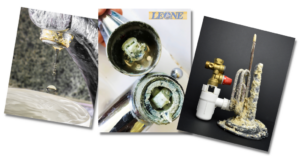 At some point, a home may encounter issues with limescale building up on a plumbing system. It happens over time which affects the performance of your plumbing system. Today, we will talk about the causes of limescale buildup and how we can treat and prevent it from accumulating on pipes.
At some point, a home may encounter issues with limescale building up on a plumbing system. It happens over time which affects the performance of your plumbing system. Today, we will talk about the causes of limescale buildup and how we can treat and prevent it from accumulating on pipes.
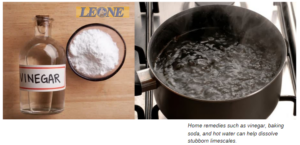
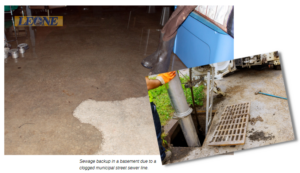
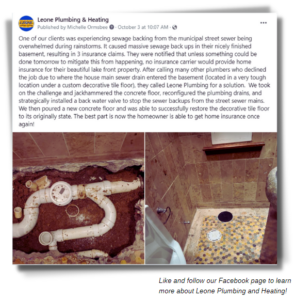 We recently had a client who experienced sewage backing up from the municipal street sewer being overwhelmed during rainstorms. It caused massive sewage backups in their nicely finished basement. This often occurs when the municipal sewage system is overloaded with water and the sewage eventually backs up through the basement floor. Although a municipal sewer line can handle loads of water, excessive rain can still overload the system. So as soon as you see dripping water on your basement floor, contact a professional plumber to check and fix the issue before it gets worse! It’s also important to contact the local public work office in the municipality if the issue persists.
We recently had a client who experienced sewage backing up from the municipal street sewer being overwhelmed during rainstorms. It caused massive sewage backups in their nicely finished basement. This often occurs when the municipal sewage system is overloaded with water and the sewage eventually backs up through the basement floor. Although a municipal sewer line can handle loads of water, excessive rain can still overload the system. So as soon as you see dripping water on your basement floor, contact a professional plumber to check and fix the issue before it gets worse! It’s also important to contact the local public work office in the municipality if the issue persists.
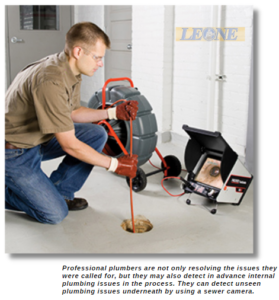 Proper plumbing maintenance is still a good method of prevention. We suggest that you schedule a sewer line inspection with a trusted plumbing professional to check the condition of your sewer lines. We also advise that you do a regular pipe cleaning to prevent any clogs that can cause serious backups. Avoid fat, oils, and other solid materials from flowing down the drain as it can also cause blockages that trigger sewage backup.
Proper plumbing maintenance is still a good method of prevention. We suggest that you schedule a sewer line inspection with a trusted plumbing professional to check the condition of your sewer lines. We also advise that you do a regular pipe cleaning to prevent any clogs that can cause serious backups. Avoid fat, oils, and other solid materials from flowing down the drain as it can also cause blockages that trigger sewage backup.
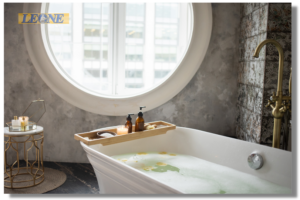 Experiencing sewage water backing up through your bathtub is a terrible issue to deal with! It is one of the dreaded plumbing concerns for any homeowners. Sewage coming up through the bathtub not only brings unpleasant odors but also health hazards due to harmful organisms and contaminants present in the dirty water. It is important not to touch or directly have contact with the sewage water as it may cause serious illness. How do you deal with this trouble and why is it happening?
Experiencing sewage water backing up through your bathtub is a terrible issue to deal with! It is one of the dreaded plumbing concerns for any homeowners. Sewage coming up through the bathtub not only brings unpleasant odors but also health hazards due to harmful organisms and contaminants present in the dirty water. It is important not to touch or directly have contact with the sewage water as it may cause serious illness. How do you deal with this trouble and why is it happening?
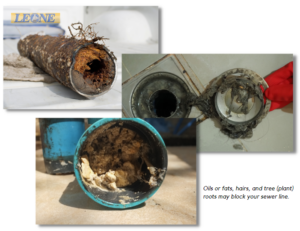
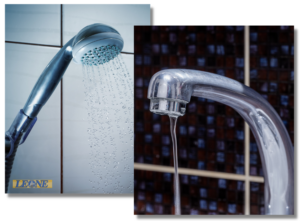 Ending the day with a refreshing shower is satisfying and it relieves all the day’s stress. But this moment can be spoiled with a trickle of water coming out from your shower due to low pressure. This issue does not only affect your shower but also the kitchen and the toilet. If you are getting a few drips of drinking water from your kitchen faucet or your toilet tank is slowly filling up after you flush, then it’s telling you that the water pressure has dropped.
Ending the day with a refreshing shower is satisfying and it relieves all the day’s stress. But this moment can be spoiled with a trickle of water coming out from your shower due to low pressure. This issue does not only affect your shower but also the kitchen and the toilet. If you are getting a few drips of drinking water from your kitchen faucet or your toilet tank is slowly filling up after you flush, then it’s telling you that the water pressure has dropped.
